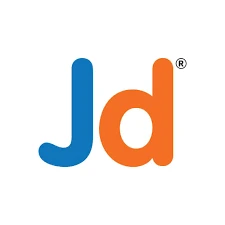In India, the scope of machine learning is significant and growing rapidly across various sectors. Here's a glimpse into how machine learning is being applied and its scope in India:
- Healthcare: Machine learning is being used for medical image analysis, disease diagnosis, personalized treatment plans, drug discovery, and predictive analytics for patient outcomes. Indian startups and research institutions are actively involved in developing AI-powered healthcare solutions to address the country's healthcare challenges.
- Finance: In the finance sector, machine learning is applied for fraud detection, risk assessment, algorithmic trading, credit scoring, and customer relationship management. Indian banks, financial institutions, and fintech startups are leveraging machine learning to enhance operational efficiency, mitigate risks, and improve customer experience.
- E-commerce: Machine learning algorithms power recommendation systems, personalized marketing, demand forecasting, supply chain optimization, and fraud prevention in the e-commerce industry. Indian e-commerce giants and startups are increasingly adopting AI and machine learning to drive sales, improve customer engagement, and streamline operations.
- Education: Machine learning is transforming education in India through adaptive learning platforms, personalized tutoring systems, student performance analysis, and automated grading systems. Edtech startups in India are leveraging machine learning to offer scalable and personalized learning experiences to students across diverse educational levels and subjects.
- Agriculture: Machine learning is being applied in precision agriculture for crop yield prediction, pest detection, soil health monitoring, and agricultural supply chain optimization. Indian agritech startups are developing AI-powered solutions to address challenges faced by farmers and improve agricultural productivity.
- Manufacturing: In the manufacturing sector, machine learning is used for predictive maintenance, quality control, supply chain optimization, inventory management, and process automation. Indian manufacturing companies are embracing AI and machine learning technologies to enhance productivity, reduce downtime, and optimize resource utilization.
- Smart Cities: Machine learning plays a crucial role in building smart cities in India by enabling intelligent transportation systems, energy management, waste management, urban planning, and public safety solutions. Indian cities are deploying AI-driven technologies to address urban challenges and improve the quality of life for residents.
- Language and Speech Processing: With India's diverse linguistic landscape, machine learning is used for natural language processing (NLP), speech recognition, machine translation, and chatbots in various Indian languages. Indian startups and research organizations are developing AI-powered solutions to bridge the language barrier and facilitate communication in multilingual contexts.
Overall, the scope of machine learning in India is vast and encompasses diverse industries and applications. With growing investments, research initiatives, and collaborations, India is poised to leverage machine learning technologies to drive innovation, economic growth, and societal development.











 4.8 (21,636) reviews
4.8 (21,636) reviews
 PYTHON
PYTHON
 Pandas
Pandas
 GitHub
GitHub
 Scikit-learn
Scikit-learn
 Keras
Keras
 NumPy
NumPy
 PyTorch
PyTorch
 Docker
Docker
 Tensor Flow
Tensor Flow
 Google Cloud
Google Cloud
 Torch
Torch
 Jupyter Notebook
Jupyter Notebook
 Seaborn
Seaborn
 ML
ML


 Read more
Read more 
